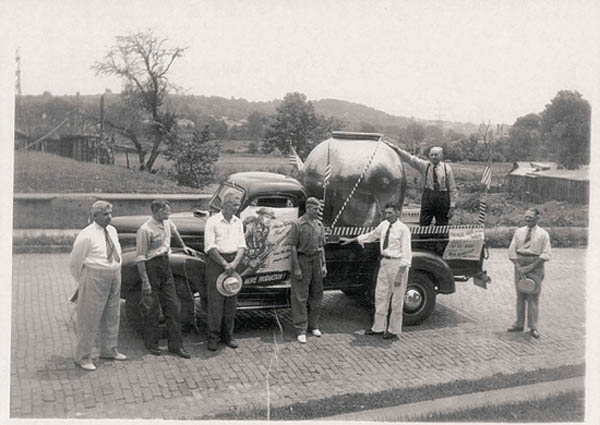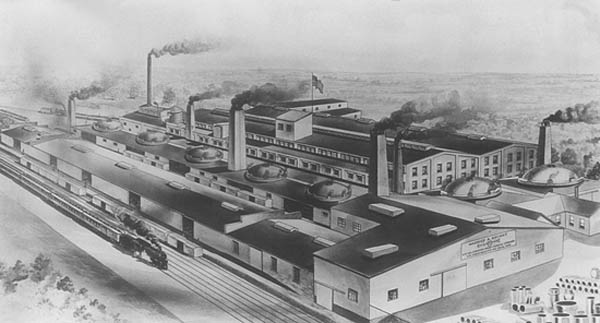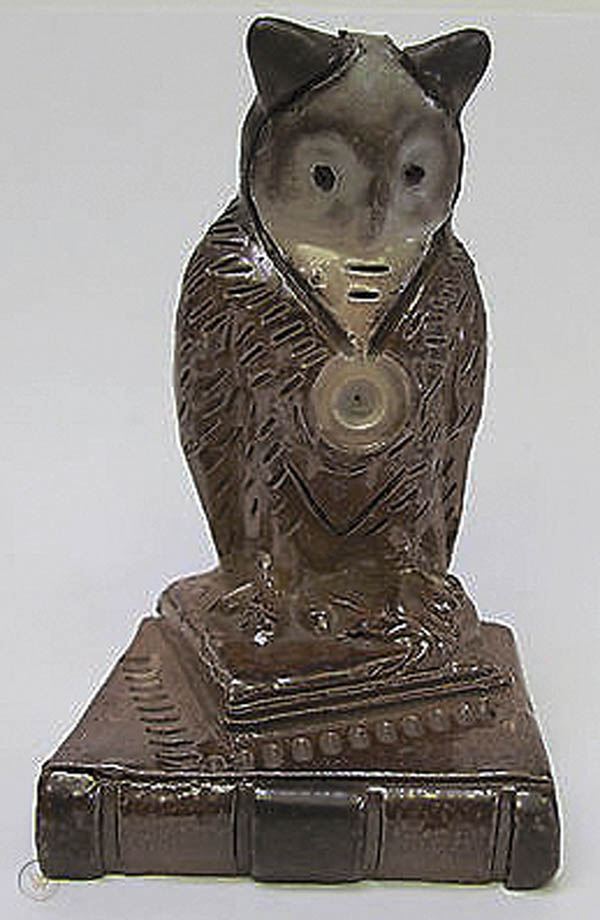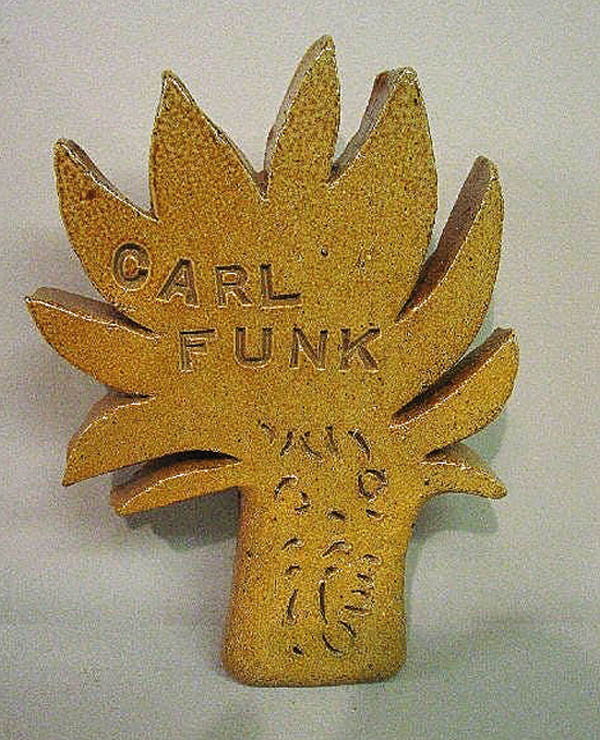Special Folk Art Ceramic Vase Made At The Maurice Knight Chemical Stoneware Plant In Akron, Ohio
Carl Funk’s Sewer Tile Vase Is Dated 1935
By Justin W. Thomas - February 05, 2021
In the late 19th and 20th century, people who worked in sewer pipe factories used leftover clay at the end of the day to make a wide assortment of decorative objects, some of which were given as gifts. These pipe factories were found all over the United States, although the most prominent production seems to have taken place in western Pennsylvania and Ohio, most actively from 1890 to 1950. The forms that were made include figures of animals, banks, vases, mugs, flowerpots, birdhouses, doorstops, bookends, and other shapes. Many of the sewer pipe pieces were created as personal items for family members and friends. They were given to children, likely as birthday presents and for other holiday celebrations. Some of these special objects were even created as wedding gifts. These pieces often reflect the personality and creativity of the person who manufactured them, which goes outside the norm of the traditional everyday utilitarian potter, who manufactured specific household forms that were then sold to the general public. The manufacture of these whimsical and special objects was largely the result of technology and urbanization. With the onset of 19th century urbanization in America, especially during the Industrial Revolution, came a larger disease issue, specifically in metropolitan areas. Because of this, sewer technology progressed rapidly, and by the late 1800s, vitrified clay or sewer pipe became the choice material for most American cities. This is what ultimately led to a boom in the industry, creating a thriving job market in many regions of the country, which in the end gave these clay workers the opportunity to show their creative side with leftover clay. However, sewer tile production is in some ways an extension of the American stoneware industry, seeing that when many stoneware kilns closed in the late 19th century, a number of the potters transitioned to work at the sewer tile factories. They brought along with them the novelty and craft they had learned working for stoneware companies, where after-hours creativity was very much a part of that industry, as well. The decorating techniques found on some of these pieces include applied decorations, embossing and incising. Some of the objects also drew inspiration from similar objects manufactured in England, such as molded spaniels. These pieces can also be found marked, whether it be signed with initials, a name, and a date or even stamped with the mark of a sewer tile factory. The most special pieces are usually those that can be associated with a specific person and the meaning for why that object was made in the first place. A Sewer Tile Vase Made By Carl Funk In Akron, Ohio In the fall of 2020, I acquired a 20th century sewer tile vase decorated with applied birds and various flowers. I purchased it out of Illinois, but it was thought to have been found prior to that in Ohio. Even though the form and decoration was appealing, it was an inscribed writing on the base that captured my attention. The inscription read,Marie Funk / Dec. 21, 1935 / Carl Funk. Carl Elton Funk (1913-2005) was of German descent, born in Akron, Ohio, on Feb. 26, 1913. His first wife, Marie Funk, was born in 1918; they divorced March 27, 1947, although, he married a second time in 1951 to Vera Genevee Parsons (1919-2011). Funk worked at the Maurice Knight Chemical Stoneware Plant in Ohio, very likely starting there in the late 1920s or early 1930s (which is where this piece was certainly made). Later in life, he was a gospel singer on television and radio in Louisville, Ohio. He is buried next to his second wife in Forte Meade, Fla. Funks occupation is listed in the 1940 U.S. Federal Census as an Ovens Tender, Clay Factory. It would seem that he began in the pottery industry at a young age based on the fact that his highest level of education achieved was eighth grade. His father, Howard Thurlow Funk (b. July 25, 1881), was also a German potter working in Akron, listed as a maker of chemical stoneware. The Maurice Knight Chemical Stoneware Plant was established in 1910, and the company was the first United States maker of acid-resistant ceramics that could be used in chemical processing. Among the products manufactured were huge ceramic urns used to move corrosive liquids before tanker trucks and rail cars were developed to transport acids. In the 1920s, a typical large container used to treat acid and convert sulfur dioxide would have been five feet in diameter and 20 to 25 feet tall. There are pictures that survive today from the World War II period showing this factorys clay workers surrounding some of these giant urns. These are the type of workers who would have been among the people who manufactured end-of-the-day sewer tile pieces. There is even at least one photograph of a young Carl Funk taken around the time this vase was made. In Retrospect The inscription is what makes this piece so special, showing that this was undoubtedly a piece manufactured in Carl Funks downtime, possibly at lunch or at the end of the day. I suspect that because of the December date that this was likely a Christmas present made by Carl Funk for his first wife, Marie, in 1935. Rarely is there any pottery that survives today that can be connected with such a special meaning. This is a hand-thrown vase adorned in applied birds, flowers and leaves, as well as molded handles. There are other whimsical sewer tile pieces that survive from Funk today, but I have not seen anything that would indicate there is other pottery known where these same type of applied decorations were used. These may have been special decorations that Funk created just for this piece that he very likely gave to Marie when they were newlyweds, seeing that when this piece was created when he was only 22 and she was just 17 years old. Sources Adamson, Jack E. Illustrated Hand Book of Ohio Sewer Pipe Folk Art. self published, 1973. Gold, Anita. Pipe Factory Workers Made Their Mark With Whimsical Sculptures. Chicago Tribune, June 14, 1985. Kelley, Patrick G. Industrial Ceramic Maker Marks 100 Years. Canton Rep, July 5, 2010.








SHARE
PRINT